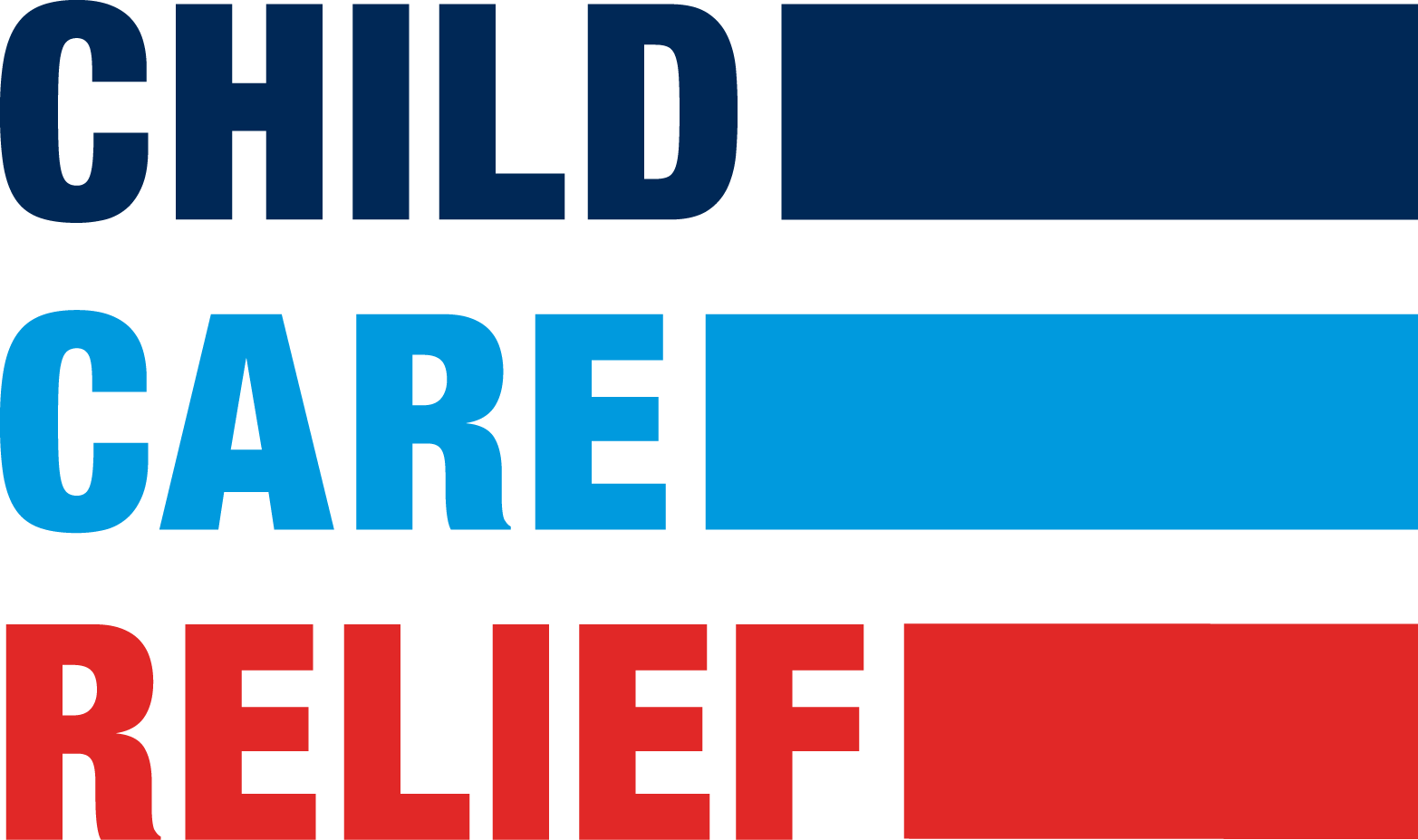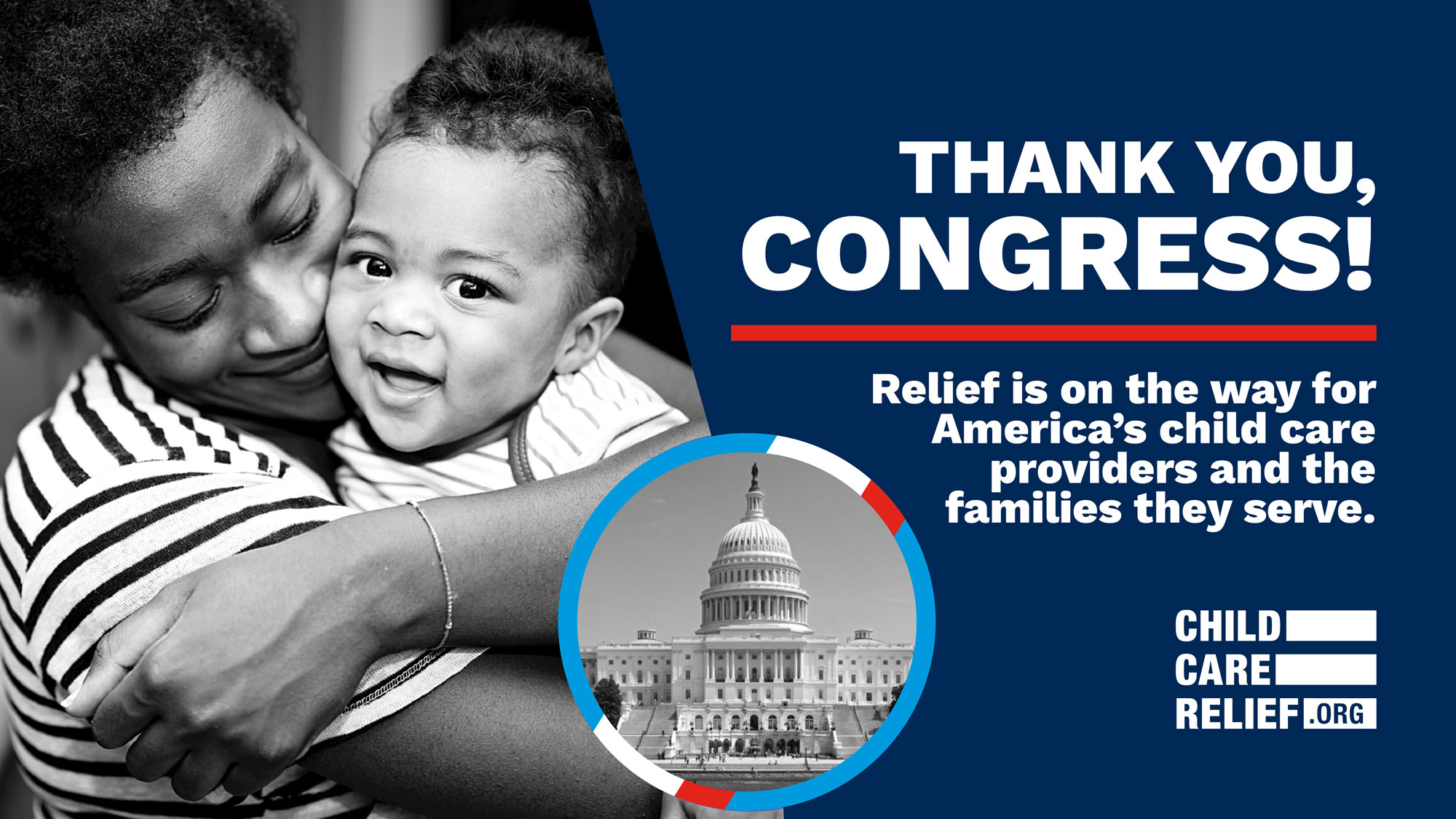
Child Care Recommendations for Congress
May 7, 2020
The Honorable Nancy Pelosi
U.S. House of Representatives
Washington, DC 20515
The Honorable Kevin McCarthy
U.S. House of Representatives
Washington, DC 20515
The Honorable Mitch McConnell
U.S. Senate
Washington, DC 20510
The Honorable Chuck Schumer
U.S. Senate
Washington, DC 20510
Dear Speaker Pelosi, Minority Leader McCarthy, Majority Leader McConnell, and Minority Leader Schumer,
Our nation’s long-term well-being depends on a child care infrastructure that works for every family. An abundance of quality, affordable, child care is critical to both our economic recovery from the pandemic and our social welfare. However, a sizable portion of the American labor force will not be able to return to work if the nation’s child care supply has disappeared as a result of this crippling economic crisis. As national early learning and care organizations, we write to respectfully request that the next congressional relief package provide substantial, specific relief to address child care.
We thank Congress for your efforts in passing both the Coronavirus Aid, Relief, and Economic Security Act (CARES Act) and the Paycheck Protection Program and Health Care Enhancement Act. Our shared goals since the onset of the COVID-19 pandemic have been for Congress to:
- First, ensure child care providers who are closed have access to federal funding, including but not limited to direct grants, that will allow them to pay staff, cover fixed costs, and reopen as families return to work over an extended period of time. The child care industry is unique, and while child care providers vary widely in their structures and funding, providers of all sizes and in every community have been negatively affected by this pandemic and need support. It is essential that Congress invest in stabilization measures specific to the needs of our nation’s child care industry that are flexible and accessible to the broad range of child care providers.
- Second, guarantee providers who stayed open while serving fewer children and families during this crisis have the supports needed to provide safe and quality early care and education (including financial support to compensate for revenue loss, protective equipment, sanitation supplies, and premium pay) for the children attending their programs – particularly children of first responders, health care workers, and other essential personnel.
- Third, build safeguards that account for the ongoing challenges that stem from a climate of uncertainty and instability in the child care market, as well as the economy at large, and the future COVID-19 infection trajectory.
Given the scope of the pandemic and its devastating financial effects on the child care sector, we would like to provide recommendations specific to current discussions focused on additional targeted relief for child care providers. Thousands of providers across the country have shut their doors, some permanently. Prolonged closures due to coronavirus could reduce licensed child care capacity in the U.S. by half. Congress must provide direct relief to ensure child care exists and is available to parents as they return to work over an extended time period. Therefore, at this time, we are respectfully asking that Congress consider the following recommendations:
1. Establish a child care stabilization fund
Child care providers were already operating on very small margins before this pandemic; extended closures over the next several weeks or months could put a substantial percentage of providers out of business permanently, exacerbating the lack of child care options families faced long before this crisis. As providers begin to reopen, we know it will be a slow, phased-in process, much like the broader economy, and it will take time before they are operating near their pre-pandemic capacity, causing them to operate at significant financial loss for several months. Unfortunately, neither the Paycheck Protection Program nor Title IV of the CARES Act was sufficient to meet the unique needs of the child care industry, particularly in family-based child care, which serves a significant percentage of our nation’s infants and toddlers. Due to these realities, many providers will not be able to reopen or remain open without substantial, dedicated funding. This stabilization fund is not intended to supplant state child care spending in efforts to balance their budgets. It is also not intended that this funding undermine the health and safety standards established and regulated by state child care licensing. A child care stabilization fund, potentially administered through an existing grant program, would ensure:
- The child care market – centers and family child care homes – survives this period of closure and slow economic recovery by shoring up programs and providers. Grants to child care providers based on capacity and covering fixed costs will be critical to preventing permanent closure. Without intervention, massive child care closures would compromise parents’ ability to re-enter the workforce and lead to a significantly slower recovery for the U.S. economy that would leave out many workers.
- Child care providers have the financial resources to reopen including the ability to cover fixed costs; provide professional development and compensation for early childhood educators prior to reopening and during the transitional phase as the economy and operations return to normal; provide deep cleanings; restock food and supplies; and purchase additional inventories of resources (e.g., thermometers, smocks, alcohol wipes).
- Programs can afford to maintain enhanced health, safety, and quality standards while providing high-quality early childhood education. These standards include, but are not limited to, enhanced safety and social distancing requirements, which will result in the need for additional, qualified staff and will limit enrollment to 50-75 percent of previous capacity; as well as mental health services for children who have been negatively impacted by the crisis.
- Providers can remain open during a phased-in process of relaxing stay-at-home orders during which they will need continued support as temporarily reduced enrollments and some continued enhanced health and safety protocols will temporarily reduce operating capacity.
- Funds are equitably distributed to ensure that providers who serve families struggling with job security, income loss, and unemployment are prioritized.
2. Ongoing support for child care for essential workers and providers that remain open
Many child care facilities and homes have remained open to provide care in this time of incredible need and uncertainty. Funding provided through the CARES Act for this purpose has been invaluable; however, the CARES Act funding will not be sufficient to meet these unique ongoing needs for a prolonged period of time. The Administration for Children and Families (ACF) recently released guidance directing states to adopt subsidy policies that promote continuity of child care services to impacted children and families, and maintain support for child care businesses during closures or other disruptors. Any additional funding directed through CCDBG should support the authorized flexibility included in these guidelines, specifically as it pertains to:
- Providing subsidy care to all families who need it as a result of their role as essential workers.
- Increased compensation and other costs associated with maintaining quality child care services for essential workers, including implementing social distancing guidelines and procedures, providing primary protective equipment, and resources for the sanitation of facilities in order to maintain a healthy and safe learning environment.
- Operating costs for child care providers that are open but are experiencing a reduction in revenue.
- Continuing to pay child care subsidies to providers, based on enrollment or capacity, and not attendance, regardless of their closure status.
The COVID-19 crisis has exacerbated many of the problems already facing the child care industry. Families have long struggled to access affordable high-quality options, and providers have faced slim margins and precarious financial situations. However, the pandemic has also highlighted the critical role child care plays in ensuring the success of our economy. In order to help American families, stimulate future consumer spending, support small businesses, sustain industries, and buttress the herculean efforts of medical professionals, lawmakers must recognize the through line in all of this is child care. If we do not invest in child care now, the immediate economic recovery will be slowed as parents are unable to return to work, and the long-term economic impact on businesses and our economy will be similarly severe. This package must include substantially increased funding to provide child care to families on the frontlines alongside a child care stabilization fund to make sure child care is there as parents go back to work needing safe, quality early childhood education for their children.
We look forward to working with Congress as the child care industry is reimagined in a post COVID-19 world to best support our country in the future.
Sincerely,
Alliance for Early Success (The Alliance)
Bipartisan Policy Center (BPC)
Center for American Progress (CAP)
Center for Law and Social Policy (CLASP)
Committee for Economic Development (CED)
Council for a Strong America (CSA)
Early Care and Education Consortium (ECEC)
Educare Learning Network (ELN)
First Five Years Fund (FFYF)
National Association for the Education of Young Children (NAEYC)
National Head Start Association (NHSA)
National Women’s Law Center (NWLC)
Ounce of Prevention Fund (The Ounce)
Save the Children Action Network (SCAN)
ZERO TO THREE (ZTT)

